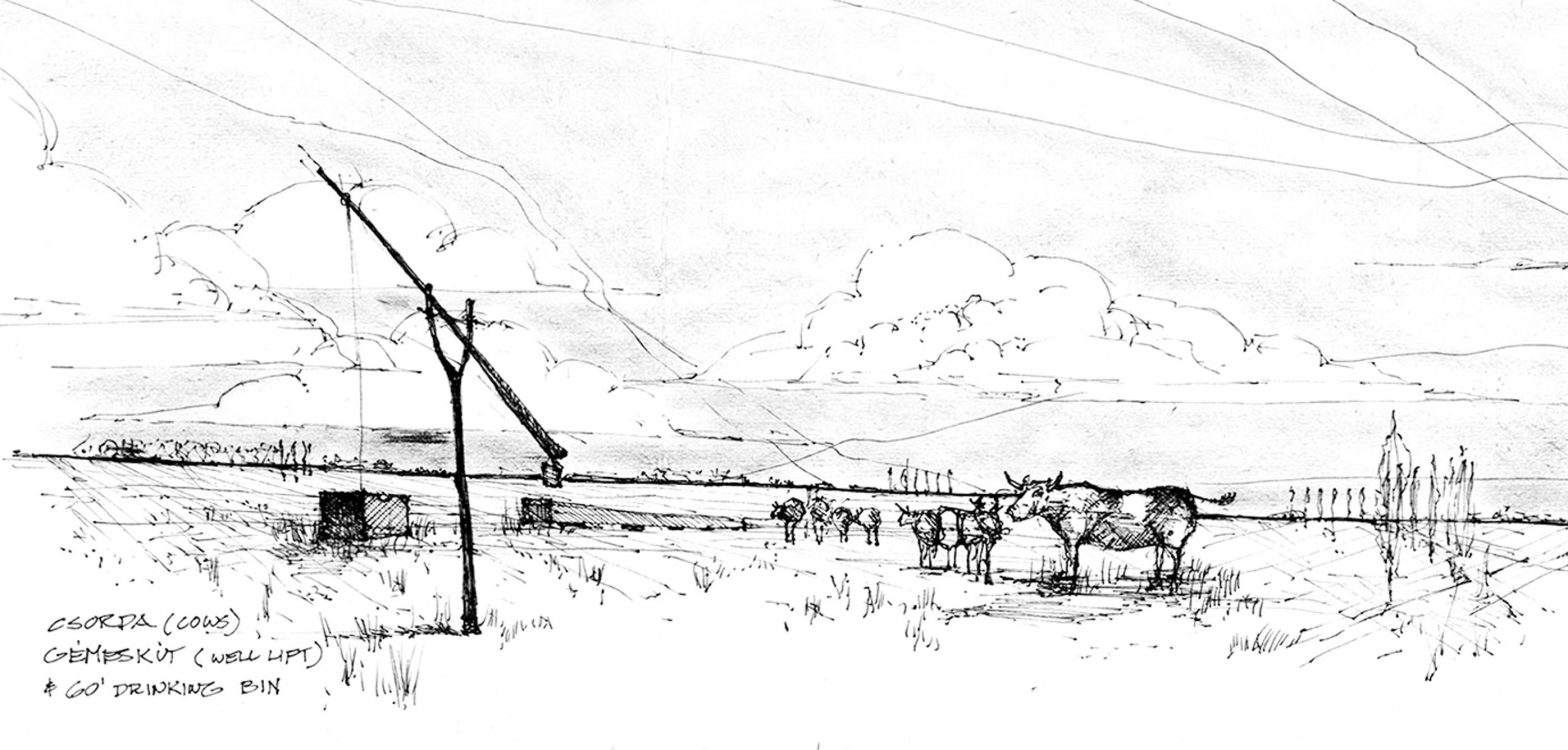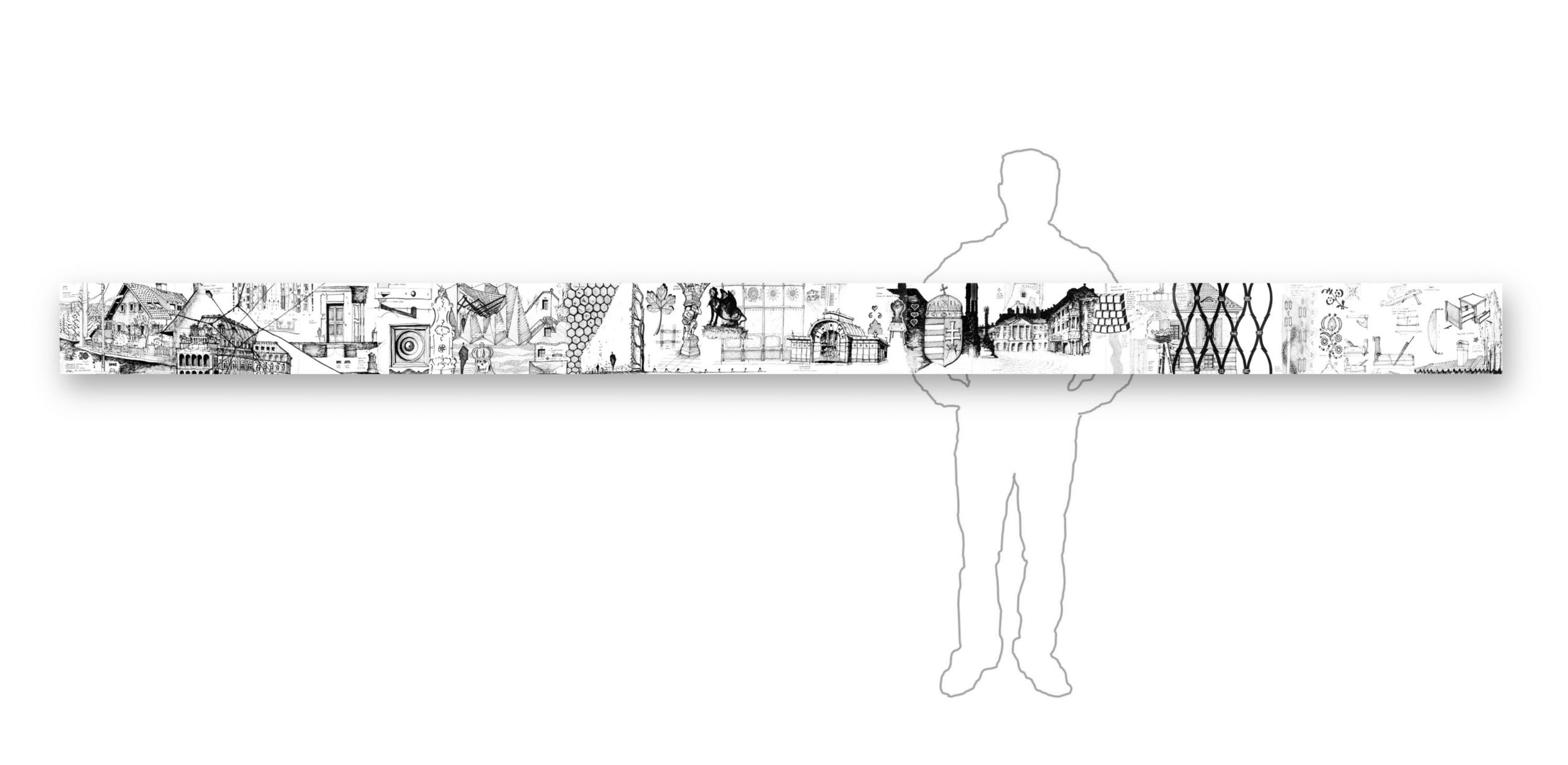Highlights Relevant to Sustainable Design:
We can pump water with less energy and learn some cultural history.
The puszta, pronounced “poo-staa,” is the Hungarian equivalent of the American plains. It is flat with seemingly endless fields of wheat that serve as a backdrop to accent church steeples and tall, spindly trees. The puszta is where the Hungarian cowboys roam, and it is romanticized like our Old West. This detail drawing is of a Gemeskut, pronounced “Game-s-koot.” The counterbalance system is designed to get water out of a well without expending the labor to turn anything. The pivot design is clever, and the appearance is unmistakable on the horizon. The pivot design is also time-tested, predating Hungary for thousands of years, in regions where the water table is close enough to the surface that the rope and bucket on the pivot arm can reach down to the water.
Author and illustrator: Charlie Szoradi is an architect, inventor, and the CEO of Independence LED Lighting. He writes about many other topics related to water and hand well construction through his extensive travels around the world.
If you have found this posting online, it is an excerpt from Mr. Szoradi’s book Learn from Looking that served as the inspiring seed content for this drawing share resource. For additional drawings and insights on irrigation and hand well use, we hope that you enjoy exploring LearnfromLooking.com. You can search via general terms such as sustainability as well as narrower terms such as hand well implementation and other impacts on agriculture.



